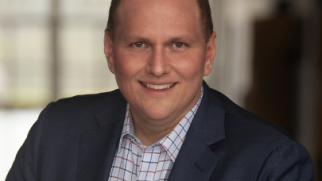Protecting the safety net for seriously ill patients
With the U.S. House of Representative’s recent passage of the amended American Health Care Act (AHCA), individuals with life-threatening, chronic and rare diseases are growing increasingly concerned about whether they will have adequate coverage for the specialized care and medications they need.
Should the AHCA become law, the Congressional Budget Office estimates that 23 million more Americans will be uninsured by 2026.
A shrinking safety net
Today’s health system is far from perfect, but it provides some form of insurance for most Americans. Many people—especially those with serious illnesses—still struggle with access and affordability issues because of limited networks, restricted formularies and high out-of-pocket costs. But Medicaid, Medicare, state exchanges and employer-based health plans generally meet most individuals’ needs.
In addition, drug manufacturer-sponsored patient assistance programs and independent charitable foundations provide an important safety net for the uninsured and underinsured. These programs help thousands of seriously ill patients receive the care they need by either providing free medications or by paying for a portion of their out-of-pocket costs.
Yet, the uncertainty about what will happen with the healthcare system over the next months and years is making it difficult to predict how many people with serious illnesses will need assistance, and how much support will be available.
The importance of a strong safety net for patients with life-threatening, chronic and rare diseases is not going to diminish any time soon. And high out-of-pocket costs, narrow provider networks and restricted formularies are likely to disproportionately impact these patients under the AHCA—just as they have under the ACA.
Until there is a systemic fix to the problem of under insurance, we must continue to work together to ensure that patient assistance programs, in particular those operated by charitable foundations, can continue to assist patients struggling with high out-of-pocket costs.
Since 2004, the U.S. Department of Health and Human Services Office of Inspector General has authorized independent charitable co-payment foundations to provide patients with assistance and has allowed pharmaceutical manufacturers to provide such organizations with financial support, in compliance with strict federal regulations. Without the safety net provided by charitable foundations, each year, hundreds of thousands of seriously ill patients would not be able to get the care they need.
Reflecting on our work
We are proud of the strides PAN made in 2016. And we know that our work would not have been possible without the support of our generous donors and remarkable healthcare provider, pharmacy and patient advocacy partners. But our job is far from done. We look forward to continuing to work with you in 2017 to ensure that—together —we are doing everything we can to preserve the safety net for the patients who need it most.

Annual Report 2016
Learn more about the impact we’re making in the lives of patients in our annual report.
Was this helpful?
